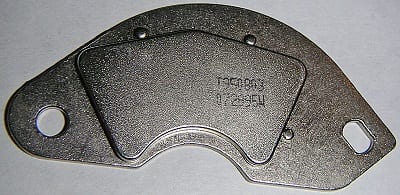New recycling technology recovers and extracts rare earth minerals
August 21, 2015The technology could recover rare earth elements from old electronics.
A new recycling technology developed by the U.S. Department of Energy’s Critical Materials Institute (CMI), assists in the recycling, recovery, and extraction process of rare earth minerals, and it is said to be the first commercially licensed technology developed through the CMI. According to a news article from Oak Ridge National Laboratory (ORNL), it has been licensed to U.S. Rare Earths, Inc.,
The single-step recycling process is more environmentally friendly than other rare earth elements extraction methods.
The technology involves a membrane solvent extraction system that was invented by the Idaho and Oak Ridge national laboratories. Both are partners of CMI. According to Ramesh Bhave from ORNL, who led the research and development of the membrane solvent extraction system, the simplified process created by the team of scientists, eradicated many of the barriers that can make recycling critical materials from electronic waste costly and hazardous to the environment.
 Behave stated that “Our single-step process to recover rare-earth elements from scrap magnets is more environmentally friendly and has the potential to be a more cost-effective approach compared to conventional routes such as precipitation.”
Behave stated that “Our single-step process to recover rare-earth elements from scrap magnets is more environmentally friendly and has the potential to be a more cost-effective approach compared to conventional routes such as precipitation.”
The innovative recycling technology recovers up to 90% rare earths.
In order to be able to selectively recover rare earth elements like dysprosium, neodymium, and praseodymium, the technology combines organic solvents, fiber membranes, and neutral extractants. The rare earth elements that it can recover have a vital function in permanent magnets that are used in computers, hard disk drives, electric motors, cars, and cell phones.
Laboratory tests that have been conducted using the membrane extraction system on scrap neodymium-based magnets, have shown that the technology has the potential to recover over 90% of dysprosium, neodymium, and praseodymium in an extremely pure form from these magnets.
U.S. Rare Earths CEO Kevin Cassidy said that electronic waste recycling will provide “a competitive source of neodymium, dysprosium and praseodymium for growing the clean tech sector including electric vehicles.”
Via its licensing agreements with Oak Ridge National Laboratory, U.S. Rare Earth plans to apply the recycling technology to recover rare earth elements from its mining claims in the United States and from old electronics.

 HFN News is your leading source for fresh hydrogen and renewable energy updates. Amid the fast-paced growth of hydrogen companies, we provide top-notch news and insights about this exciting sector. Our coverage spans from hydrogen cars to global sustainable initiatives, and we highlight the latest in green jobs and developing hydrogen hubs. We invite you to share your local hydrogen news and explore today’s renewable energy job listings on our site. Thanks for choosing HFN News as your trusted guide to the hydrogen and renewable energy world!
HFN News is your leading source for fresh hydrogen and renewable energy updates. Amid the fast-paced growth of hydrogen companies, we provide top-notch news and insights about this exciting sector. Our coverage spans from hydrogen cars to global sustainable initiatives, and we highlight the latest in green jobs and developing hydrogen hubs. We invite you to share your local hydrogen news and explore today’s renewable energy job listings on our site. Thanks for choosing HFN News as your trusted guide to the hydrogen and renewable energy world!